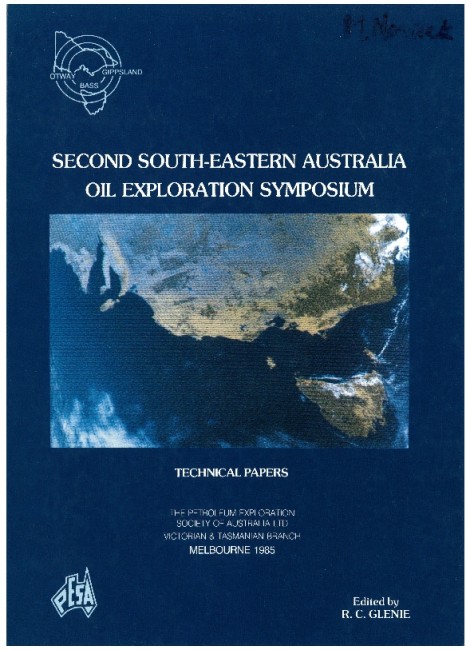Publication Name: Second South-Eastern Australia Oil Exploration Symposium - Technical Papers
Authors: A. Tabassi and L.K. Davey
Date Published: December 1986
Number of Pages: 24
Reference Type: Book Section
Abstract:
Although oil fluorescence has been reported in the basal Tertiary Pebble Point Formation in two wells in the Port Campbell Embayment of the Otway Basin, no other positive indications had been encountered in this formation prior to drilling Lindon No. 1. Drilling of the Lindon No. 1 well in the Victorian permit PEP 105 not only confirmed the oil generative potential of the Otway Basin, it also demonstrated the potential for oil entrapment within the uppermost porous section of the thick basal Tertiary/uppermost Cretaceous clastic section.At Lindon No. 1 the Pebble Point Formation is sealed by a thick Pember Mudstone Member of the Dilwyn Formation; a 3 metre (minimum) column of oil was encountered, cored and tested. Geochemical analysis indicates that the oil is a mature, non-marine waxy crude which has undergone some water washing. This process, which has removed all the light components (i.e. C1 to C15), could have occurred either in situ or during migration or both. Although a detailed characterization of the oil and sediments has not yet been completed, it is believed that the oil has been derived from the Lower Cretaceous shales and coals of the Eumeralla Formation.
Because of the substantial loss of permeability brought about by the presence of different clay minerals (smectite and kaolin groups) and the chlorite group both as a matrix and grains, only limited volumes of oil were recovered in Lindon No. 1.
Underlying the Pebble Point Formation in Lindon No. 1 is a comparatively thin Upper Cretaceous, Sherbrook Group sequence including the highly porous and permeable youngest member-the Timboon Sand. Below this group is a thick shale-prone Eumeralla Formation sequence. Optimum levels of source rock maturity in the meralla Formation, as indicated by vitrinite reflectance values, were reached only in the deeper portion of the well. A gradual increase with depth in gas components (C1 to C4) and oil shows in sands was observed.
The implications of these results will be discussed, particularly with respect to current exploration objectives within the Otway Basin.


